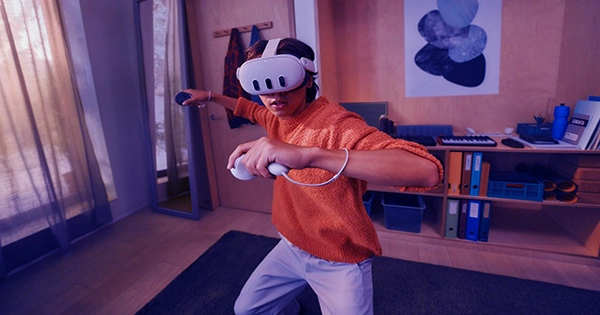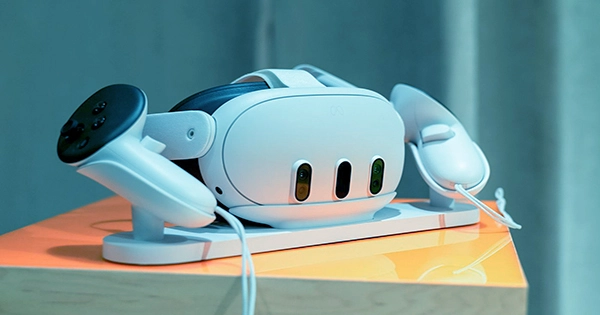Meta’s Quest 3 has already been released for more than a week, and the reviews have been overwhelmingly positive. In my own first impressions, I discussed how it persuaded me to reconsider the category – many years after I’d given up on VR as anything more than a passing fad. After a few days of living with and using the Quest 3, I believe my first enthusiastic reaction understated how much Meta has accomplished with this new headset.
The majority of my time with the Meta Quest 3 has not been spent in virtual reality, but rather with the new mixed reality features that rely on the considerably improved video passthrough Meta provided with this generation. Passthrough was previously offered on the Quest series, but it was basic at best, more concerned with stopping you from stubbing your toe or tripping over a coffee table than with any extended, useful use. This time, you can easily traverse your surroundings thanks to very low latency, color video, and greater resolution, and even utilize your phone to some level for things like obtaining credentials from your password manager to use with your various services in Meta’s software.

The benefit of leaning into mixed reality with the Quest 3 is obvious from the start. When you unbox the headset and put it on your head, it gives you a passthrough view as you navigate through the setup process, which is incomparably better and less unsettling than being thrown directly into a totally virtual enclosure for your initial interactions.
This is also the first time I’ve worn a mixed-reality headset while wandering around my apartment and doing mundane tasks like making coffee or washing dishes. It’s shocking and disconcerting how wonderful it is to be able to take a virtual Instagram or YouTube window and “carry” it with you as you travel through your own environment. You can then position it in the most convenient location while going about your regular activities. Yes, you’re still wearing a big, warm headset (albeit it’s considerably more comfortable), but the Quest 3 doesn’t simply demonstrate the possibility of wearable spatial computing — it gives a usably pleasurable version of that in the actual current-day application.
Of course, there are limitations. Wearing a headset that makes you look roughly like some kind of space-based special ops agent will not win you any favors, maybe most notably if you live with other humans, as I do. My companion was moderately amused but more horrified, the first time I walked down the stairs and into the kitchen while she was present. I tried to explain that I could see her very well, pointing out that she was just to the left of the web-based video player that was currently playing an episode of “Below Deck,” but this didn’t make her any happier with my newfound mixed reality lifestyle. When I wore it to bed, it was immediately labeled “unacceptable.”
But, no joke, the Quest 3 is a game changer for housework: I’ve been using it while doing laundry, cleaning, and generally tidying up, because it’s ideal for viewing just about anything you can stream while keeping your hands free for other duties. The improved passthrough is also suitable for all of these jobs.
Running virtual displays for my work PC is another pretty intriguing application of the Quest 3 that I’ve been loving so far. Immersed is now the best fit for how I want to work, and an interesting feature of the program is that it automatically places you in a public, shared area (dressed up as a virtual café) on the basic free plan. While working in this environment, with three virtual displays connected to my Mac, I was able to listen in on other people’s conversations (you can mute your own mic if you want) and learned about the well-being of a developer’s family from Eastern Europe talking to another developer from a neighboring country. It was similar to working in a coffee shop, but much more international.
I performed one thing while absorbed in Immersed was a duty that I always put off until the last possible moment — or even later, to be honest — doing my expenses. We, like many others, utilize Concur for cost reporting and doing so feels like having elective surgery without anesthetic even on the best of days. I was wondering if it would be more enjoyable to do them in an environment similar to “Minority Report” if the Minority Report had severe budget cuts (but was still quite amazing).
The answer is that Concur still stinks in VR (or mixed reality, which I briefly tested) — but, strangely, not much more than it does in more traditional computer contexts. I did enjoy doing conventional computer tasks in VR, even if one of those standard computer tasks was intrinsically disagreeable.
















